A container is a standard unit of software that packages up code and all its dependencies so the application runs quickly and reliably from one computing environment to another. A Docker container image is a lightweight, standalone, executable package of software that includes everything needed to run an application: code, runtime, system tools, system libraries and settings.
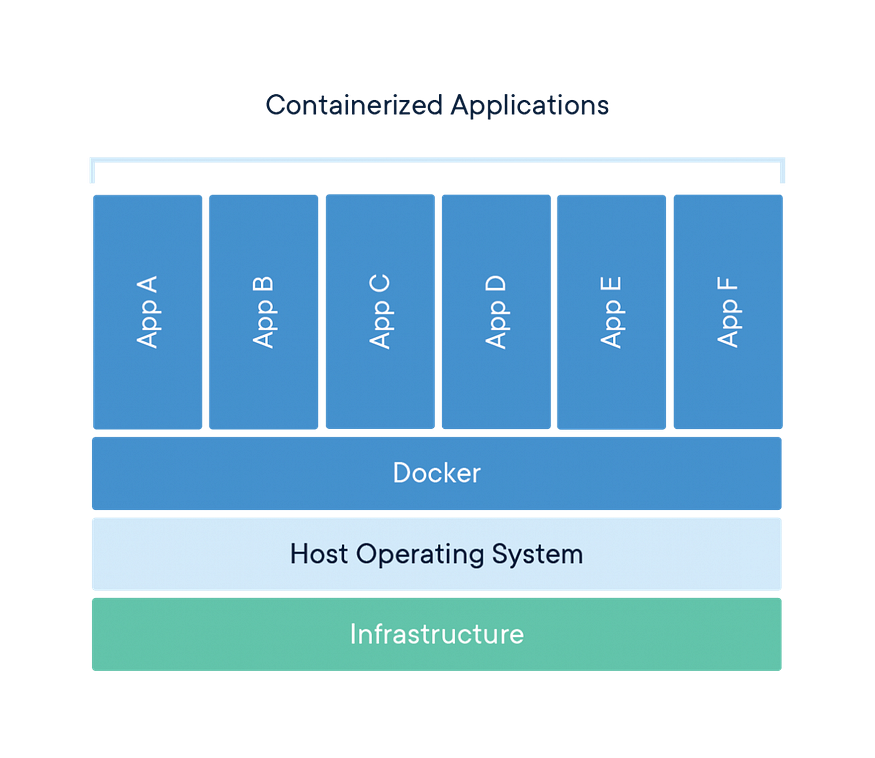
Explanation:
Imagine you’re developing a killer web app that has three main components — a React frontend, a Python API, and a PostgreSQL database. If you wanted to work on this project, you’d have to install Node, Python, and PostgreSQL.
How do you make sure you have the same versions as the other developers on your team? Or your CI/CD system? Or what’s used in production?
How do you ensure the version of Python (or Node or the database) your app needs isn’t affected by what’s already on your machine? How do you manage potential conflicts?
Enter containers!
Simply put, containers are isolated processes for each of your app’s components. Each component — the frontend React app, the Python API engine, and the database — runs in its own isolated environment, completely isolated from everything else on your machine.
Here’s what makes them awesome. Containers are:
Self-contained: Each container has everything it needs to function with no reliance on any pre-installed dependencies on the host machine.
Isolated: Since containers are run in isolation, they have minimal influence on the host and other containers, increasing the security of your applications.
Independent: Each container is independently managed. Deleting one container won’t affect any others.
Portable: Containers can run anywhere! The container that runs on your development machine will work the same way in a data center or anywhere in the cloud!
Containers versus virtual machines (VMs):
Without getting too deep, a VM is an entire operating system with its own kernel, hardware drivers, programs, and applications. Spinning up a VM only to isolate a single application is a lot of overhead.
A container is simply an isolated process with all of the files it needs to run. If you run multiple containers, they all share the same kernel, allowing you to run more applications on less infrastructure.
👉 Try it out:
In this hands-on, you will see how to run a Docker container using the Docker Desktop GUI.
🌟 Using the GUI:
Use the following instructions to run a container:
🔗 Open Docker Desktop and select the Search field on the top navigation bar.
🔗 Specify welcome-to-docker in the search input and then select the Pull button.

🔗 Once the image is successfully pulled, select the Run button.
🔗 Expand the Optional settings.
🔗 In the Container name, specify welcome-to-docker.
🔗 In the Host port, specify 8080.
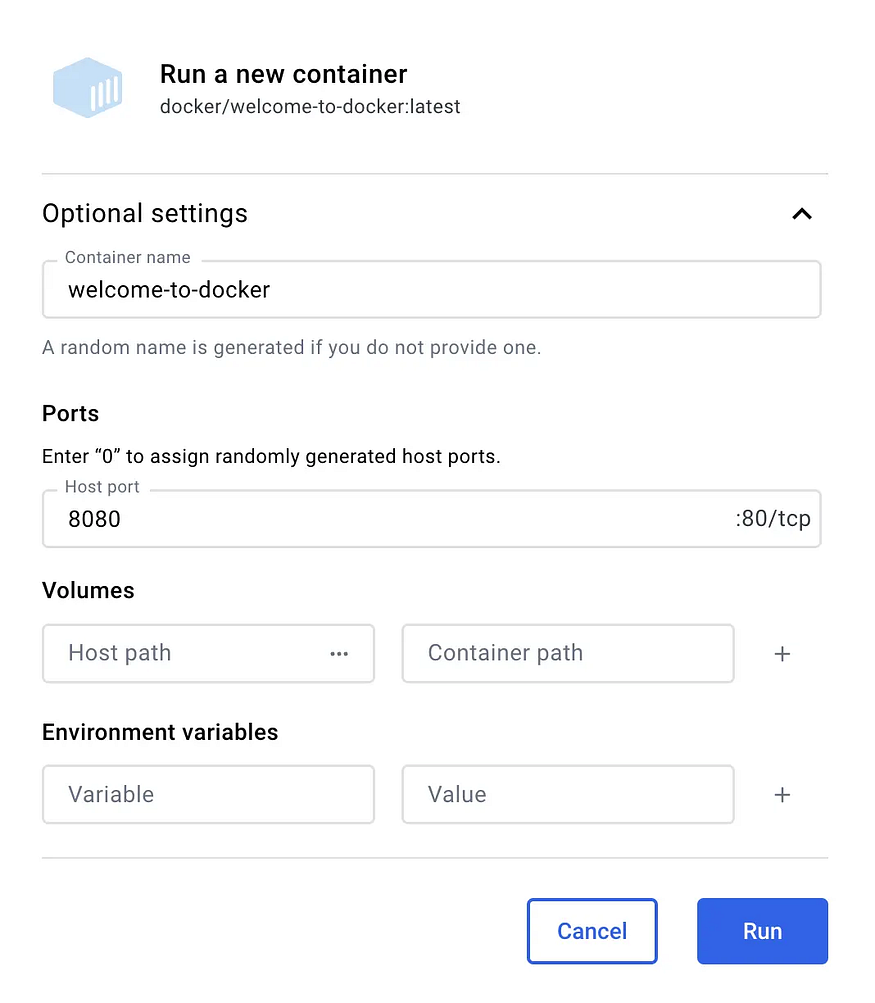
🔗 Select Run to start your container.
Congratulations! You just ran your first container! 🎉
View your container:
You can view all of your containers by going to the Containers view of the Docker Dashboard.

This container runs a web server that displays a simple website. When working with more complex projects, you’ll run different parts in different containers. For example, you might run a different container for the frontend, backend, and database.
Access the frontend:
When you launched the container, you exposed one of the container’s ports onto your machine. Think of this as creating configuration to let you to connect through the isolated environment of the container.
For this container, the frontend is accessible on port 8080. To open the website, select the link in the Port(s) column of your container or visit localhost:8080 in your browser.
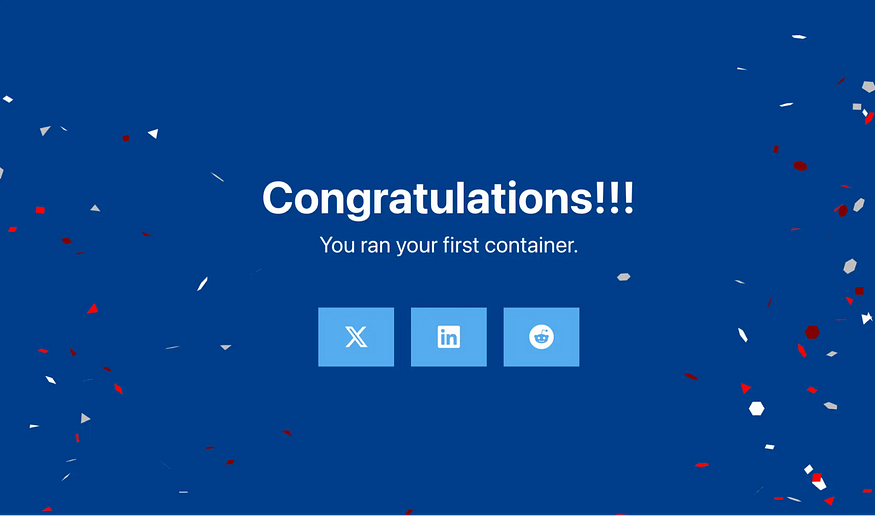
Explore your container:
Docker Desktop lets you explore and interact with different aspects of your container. Try it out yourself.
Go to the Containers view in the Docker Dashboard.
Select your container.
Select the Files tab to explore your container’s isolated file system.
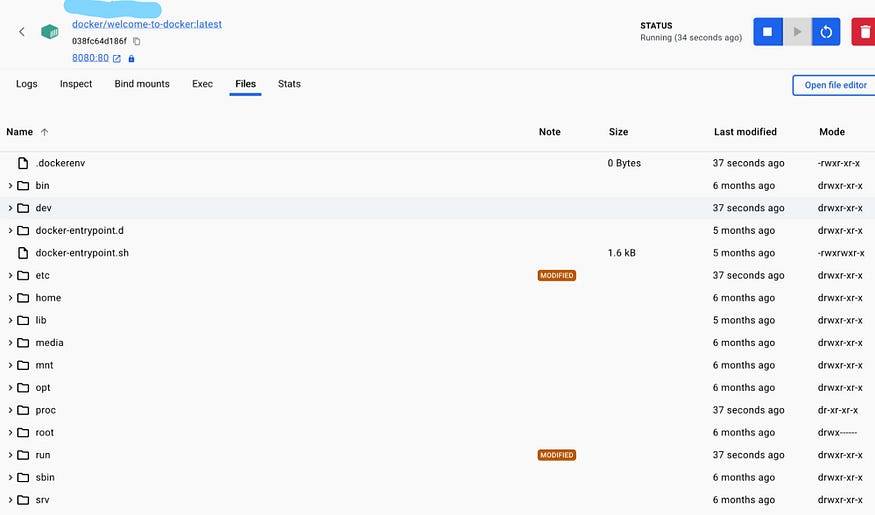
Stop your container:
The docker/welcome-to-docker container continues to run until you stop it.
Go to the Containers view in the Docker Dashboard.
Locate the container you’d like to stop.
Select the Stop action in the Actions column.

🌟 Using the CLI:
Follow the instructions to run a container using the CLI:
🔗 Open your CLI terminal and start a container by using the docker run command:
$ docker run -d -p 8080:80 docker/welcome-to-docker
Here’s a breakdown of the command:
docker run: The command to create and start a new Docker container.-d: Run the container in detached mode (in the background).-p 8080:80: Map port 8080 on the host to port 80 in the container. This allows you to access the service running in the container viahttp://localhost:8080.docker/welcome-to-docker: The name of the Docker image to use.
The output from this command is the full container ID.
For example:
a1b2c3d4e5f6g7h8i9j0k1l2m3n4o5p6q7r8s9t0u1v2w3x4y5z6a7b8c9d0e1f2g3h4i5j6k7l8m9
Congratulations! You just fired up your first container! 🎉
View your running containers:
You can verify if the container is up and running by using the docker ps command:
$ docker ps
This command will display a list of all running containers, including their IDs, names, ports, and other relevant information.
You will see output like the following:
$ CONTAINER ID IMAGE COMMAND CREATED STATUS PORTS NAMES
a1b2c3d4e5f6 docker/welcome-to-docker "/docker-entrypoint.â¦" 11 seconds ago Up 11 seconds 0.0.0.0:8080->80/tcp gracious_keldysh
This container runs a web server that displays a simple website. When working with more complex projects, you’ll run different parts in different containers. For example, a different container for the frontend, backend, and database.
Access the frontend:
When you launched the container, you exposed one of the container’s ports onto your machine. Think of this as creating configuration to let you to connect through the isolated environment of the container.
For this container, the frontend is accessible on port 8080. To open the website, select the link in the Port(s) column of your container or visit localhost:8080 in your browser.
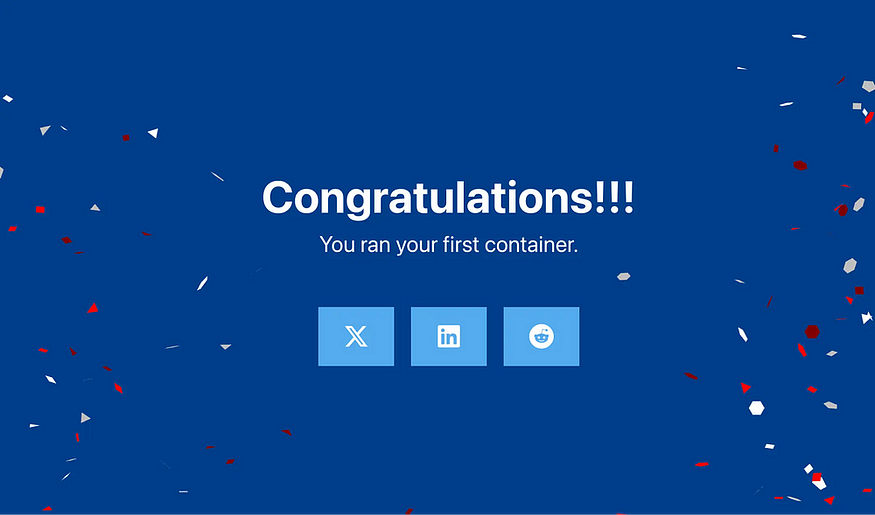
Stop your container:
The docker/welcome-to-docker container continues to run until you stop it. You can stop a container using the docker stop command.
Run
docker psto get the ID of the containerProvide the container ID or name to the
docker stopcommand:
$ docker stop <the-container-id>
